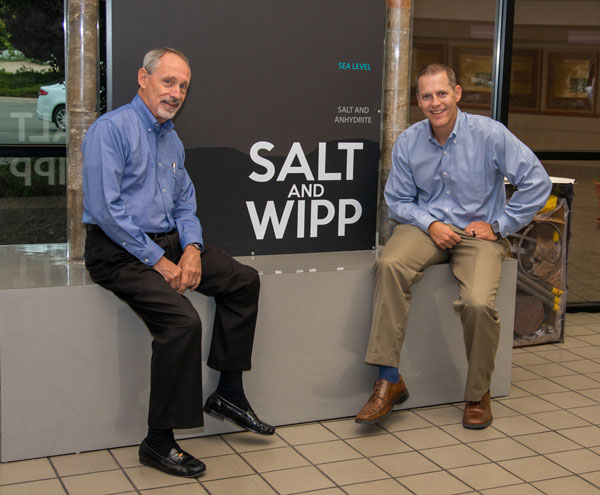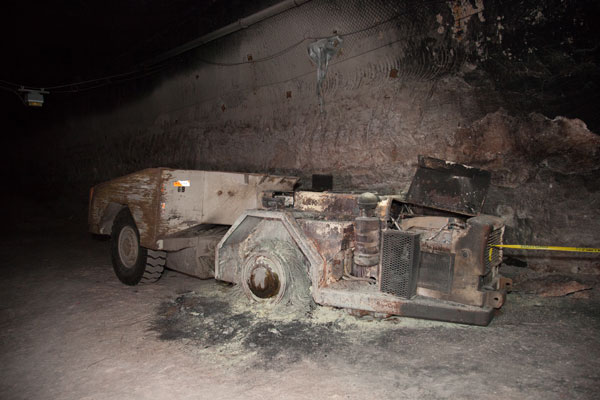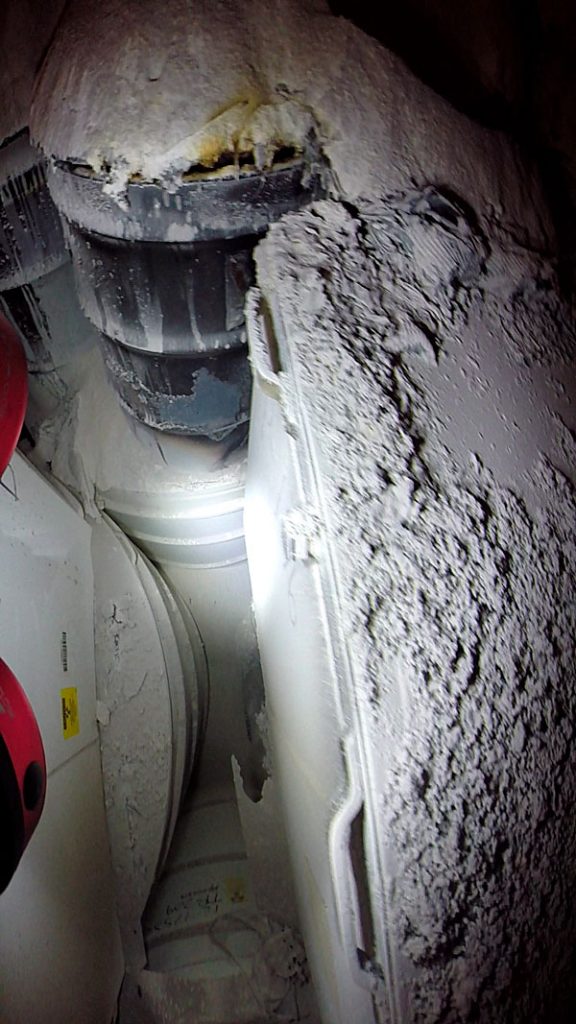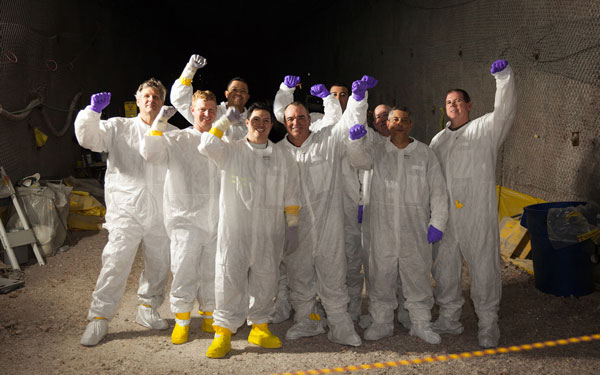Sean Dunagan calls events that led to WIPP’s three-year closure a ‘cautionary tale’
Sean Dunagan knows firsthand how to bring a major project back online after a three-year shutdown.
Following the February 2014 events that closed the Waste Isolation Pilot Plant in Carlsbad, New Mexico, Sean was the senior WIPP recovery manager at DOE. During his more than two years with the agency, he also served for a year as acting deputy manager of the Carlsbad Field Office. He is now back in Sandia’s employ as the manager of special projects and remote site support for the Labs’ Carlsbad office.
“I see the events that led to WIPP’s closure as a cautionary tale — one that could potentially happen at any DOE site or lab,” Sean said. “Our task now is to recognize preventable mistakes before they occur and to stay focused on safety and excellence.”

Learning from the WIPP shutdown
Sean cited two major contributors for the incidents that led to the shutdown at WIPP: overprioritizing the schedule and allowing a once-exemplary workplace culture to deteriorate.
“Prioritizing the schedule affects us all,” he said. “We all constantly battle external and internal pressures to meet deadlines and targeted schedules.”
A report from the formal DOE Accident Investigation Board concluded that the WIPP workplace culture had degraded by 2014, causing workforce members to become complacent. Sean agreed that the exemplary culture that characterized WIPP early in its 15 years of operations had deteriorated over time.
“Any company, department, team or individual can fall victim to a degradation in culture,” Sean said. “Each of us at Sandia should frequently step back and reevaluate if our priorities or cultures have changed or need to be changed. In the situation at the WIPP site, the priority had shifted to increasing waste disposal production over safety.”
As the WIPP science advisor to DOE’s Office of Environmental Management, Sandia is responsible for assessing long-term performance at WIPP 10,000 years into the future.
WIPP permanently disposes of defense-related transuranic waste, a byproduct of the nation’s nuclear weapons production program. The waste consists of tools, rags, protective clothing, sludges, soil and other materials contaminated with radioactive elements, mostly plutonium. There are two types of transuranic waste: newly generated waste from ongoing NNSA mission work, and legacy waste created decades ago, which has been stored at various locations in the DOE complex.
During its first 15 years of operation, WIPP had received more than 11,800 shipments of transuranic waste and had disposed of more than 90,000 cubic meters of waste.
Closing and reopening WIPP
Two separate WIPP events in February 2014 led to the repository’s shutdown. On Feb. 5, hydraulic fluid leakage caused a salt haul truck to catch fire in the WIPP underground. Six employees were treated for smoke inhalation. On Feb. 14, a drum containing organic materials and nitrate salts breached, triggering a radiological release that exposed 22 employees on the surface at the WIPP site to approximately the same amount of radiation as in a chest X-ray.


Once WIPP was shut down, no waste could be shipped to the repository from any DOE site. During the three years until WIPP reopened, formal Accident Investigation Boards met to understand why the fire and release occurred and to recommend corrective actions to prevent recurrence. DOE headquarters, the Carlsbad Field Office and Nuclear Waste Partnership, the management and operating contractor for WIPP, developed and implemented a series of corrective actions as part of the WIPP recovery process.
In December 2016, DOE authorized WIPP to resume waste emplacement operations after the site completed a series of independent reviews and pre-start corrective actions. During the official reopening of WIPP in January 2017, then-Secretary of Energy Ernest Moniz thanked everyone involved — the workforce, the contractor, federal management and the community — for their tireless efforts to make WIPP a safer place.
A key takeaway from Sean’s work on the recovery project was the importance of gaining a larger perspective while keeping each audience in mind. An incident of this magnitude attracts a lot of attention and help from outside entities, he said.
“I tried to understand the situation from several points of view: workforce members worried about their jobs, stakeholders concerned about their community, DOE as the facility owner with responsibility for the contamination, elected officials trying to determine the best path forward and regulators who oversaw the facility and had to figure out how it could resume operations,” Sean said. “My role was to provide an outside, unbiased perspective.”
Sean grew up in Carlsbad, so he was able to look at the WIPP recovery process from the vantage point of a local. He also drew upon his ties to the community for insight about how outside groups viewed Sandia.
“It’s important to understand how situations or problems that we encounter are seen from different points of view,” he said. “As an organization, we must then try to understand how Sandia, our workforce members and even we as individuals are perceived in turn. Participating in this introspective process will enable good decisions and progress to be made.”
Sean said there were many obstacles and challenges to overcome following the shutdown of WIPP.
“The list of the challenges that we faced was pretty lengthy,” he said. “From budget woes, changing political climates, safety issues, technical concerns — the list could go on and on.”
The extensive outside interest and offers of assistance made a deep impression on Sean. “We were trying to make progress while continuously hosting some external groups that were attempting to provide some type of support,” he said. “All of the groups had good intentions, but continuous outside or additional support can be counterproductive.
In addition, the DOE team that Sean led in the WIPP recovery process was challenged by the need to devote tremendous amounts of time and energy to education. For example, they explained to numerous outside groups how a salt mine like WIPP works. The team also had to educate the public and elected officials on what happened, the impacts and the path to recovery.
A continuing focus on the needs of the nation
Sandia has maintained a remote site in Carlsbad for its WIPP efforts since 1994, but the Labs’ efforts for the national repository go back much further, says Paul Shoemaker, senior manager at Sandia Carlsbad.
“Sandia has supported DOE and its predecessor organizations on matters pertaining to WIPP since 1974, with funding and work scope fluctuations, to be sure, but continuously over that time,” Paul said. “That may make our WIPP work the longest-running single project in the history of the Labs.”
About 55 people work there currently, Paul said.
Sean said that WIPP will continue to evolve with the national nuclear landscape.
“There are some substantial changes on the horizon for the WIPP site—unlike any we have seen since the facility opened—and we will be here to support them,” he said.
